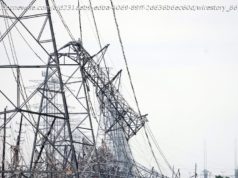Trump’s tariffs on China: What they are? How do they work? on WTOP| WASHINGTON (AP) — President Donald Trump has heightened tensions with China by escalating his tariffs on $200 billion in Chinese goods from 10% to 25%. As a tool of national policy, tariffs had long been fading into history, a relic…
WASHINGTON (AP) — President Donald Trump has heightened tensions with China by escalating his tariffs on $200 billion in Chinese goods from 10% to 25%.
As a tool of national policy, tariffs had long been fading into history, a relic of the 19th and early 20th centuries that most experts came to see as harmful to all nations involved. Yet more than any other modern president, Trump has embraced tariffs as a punitive tool — against Europe, Canada and other key trading partners but especially against China, the second-largest economy after the U. S.
The Trump administration asserts, and many independent analysts agree, that Beijing has deployed predatory tactics to try to give Chinese companies an edge in such advanced technologies as artificial intelligence, robotics and electric vehicles. Beijing’s tactics, the U. S. contends, include hacking into U. S. companies’ computers to steal trade secrets, forcing foreign companies to turn over sensitive technology in exchange for access to China’s markets and unfairly subsidizing Chinese companies.
Trump has also complained angrily about America’s gaping trade deficit with China for which he blames weak and naive negotiating by previous U. S. administrations.
Last July, Trump began gradually imposing tariffs on Chinese imports. After Friday’s increase, the administration is now imposing 25% tariffs on $250 billion in Chinese goods. Beijing has counterpunched by taxing $110 billion of American products, focusing on agricultural goods, notably soybeans, in a calculated effort to inflict pain on Trump supporters in the farm belt.






